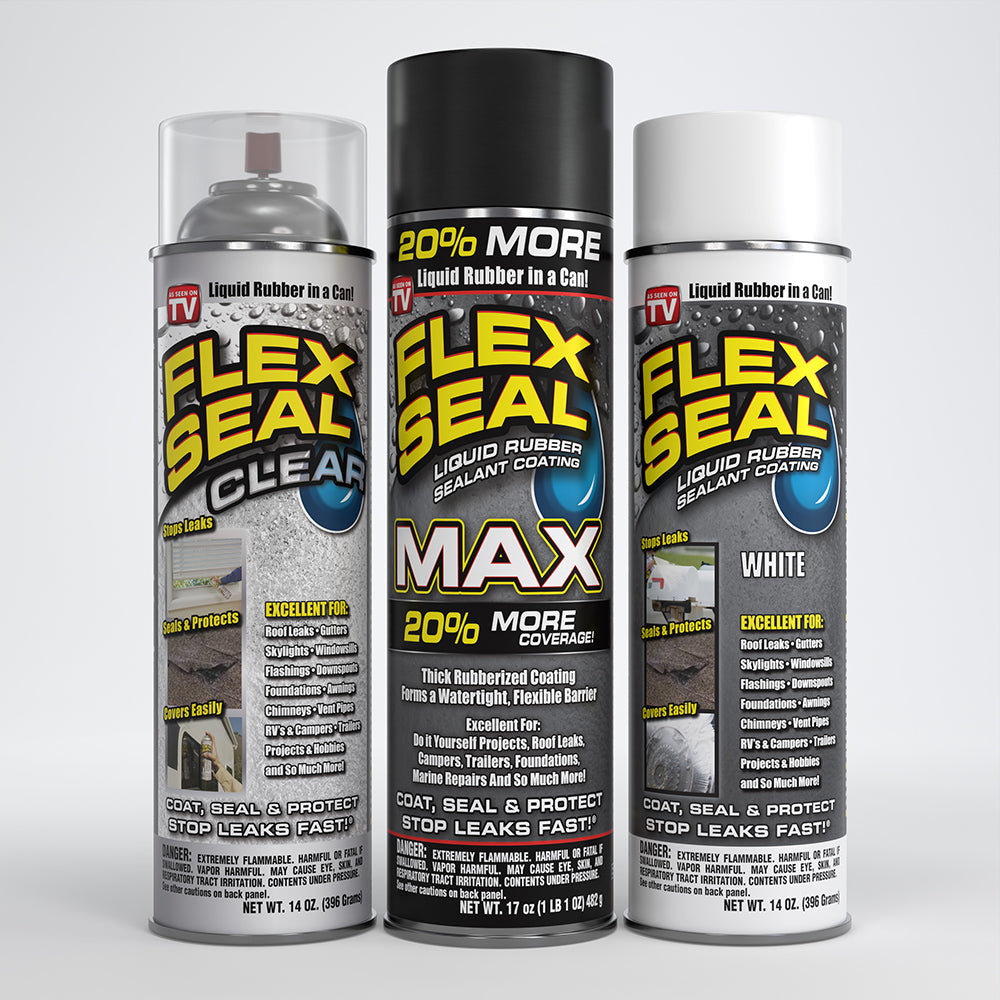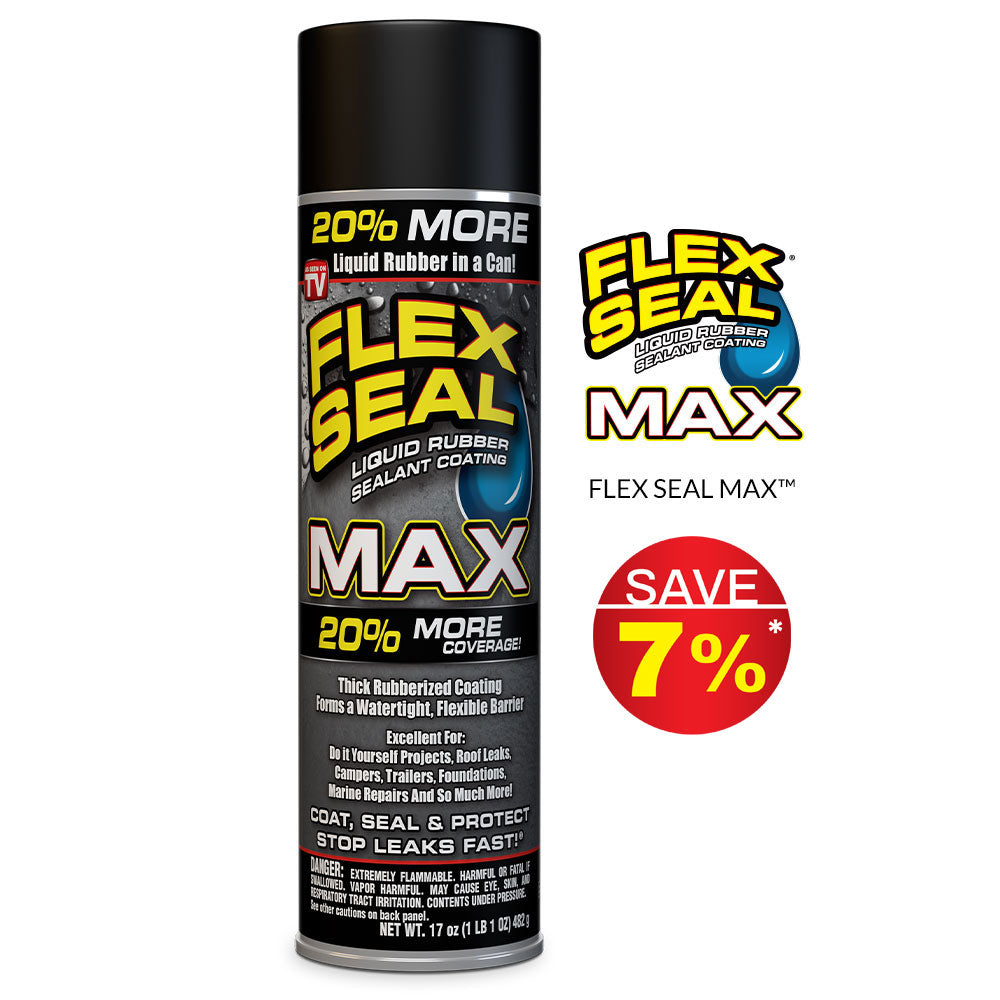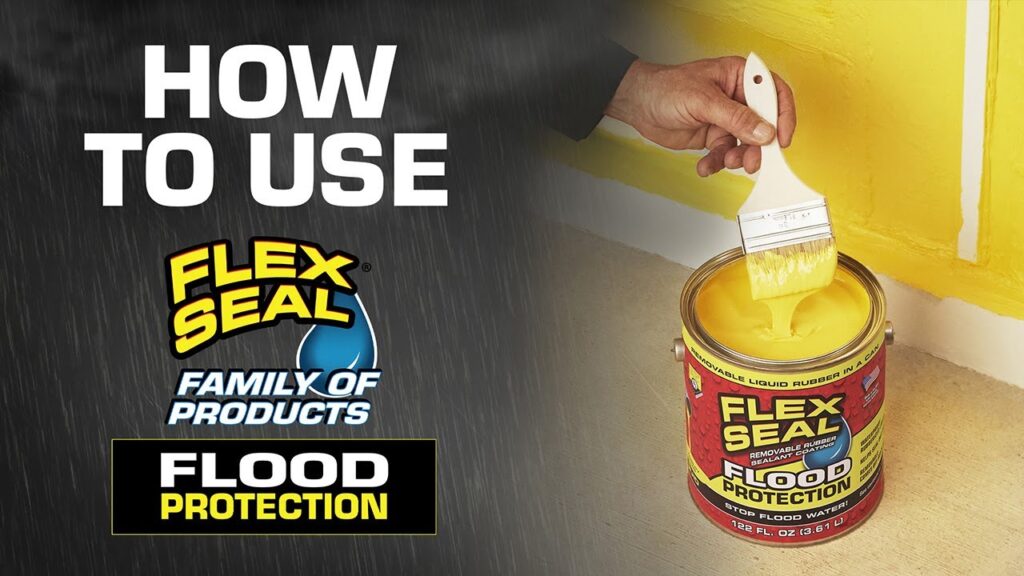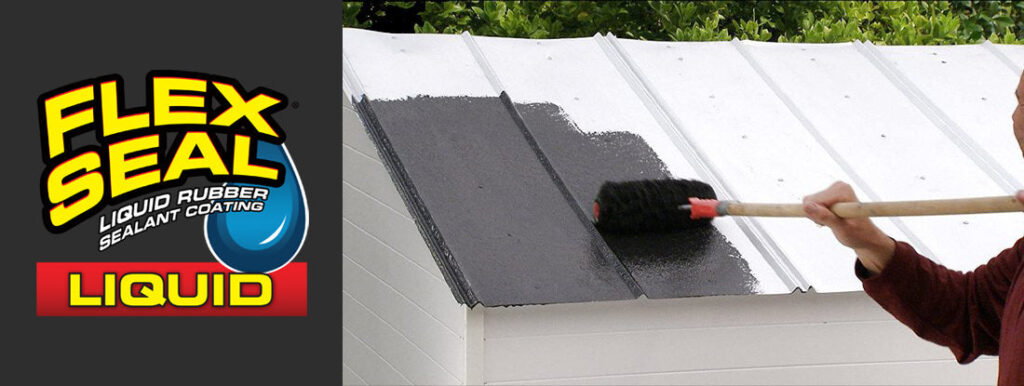Flex Seal, a renowned waterproofing product, offers a reliable solution for effectively sealing various surfaces. When it comes to determining the exact timeframe within which this remarkable substance takes to waterproof, it is essential to understand the factors that contribute to the process. By examining the application method, weather conditions, and specific surface material, one can ascertain the effective waterproofing time of Flex Seal. This article presents a comprehensive analysis of these key factors, shedding light on the timeframe required for Flex Seal to deliver optimal protection against water damage.

This image is property of flexsealproducts.com.
Factors Affecting Waterproofing Time
When it comes to waterproofing with Flex Seal, several factors can affect the time it takes for the product to effectively seal and protect a surface. Understanding these factors is crucial for achieving optimal results and ensuring the longevity of the waterproofing solution. Here are the key factors that can impact the waterproofing time of Flex Seal:
Surface Type
The type of surface being treated plays a significant role in determining the waterproofing time of Flex Seal. Different surfaces have varying levels of porosity and smoothness, which can affect the product’s ability to adhere properly and create an effective barrier against moisture. Additionally, proper surface preparation, such as cleaning and priming, is essential for ensuring maximum adhesion and reducing the time needed for Flex Seal to waterproof the surface.
Ambient Temperature
The ambient temperature in which the Flex Seal is applied can greatly influence the drying and curing time of the product. Higher temperatures generally accelerate the drying process, allowing the liquid or spray to form a protective layer more quickly. On the other hand, lower temperatures can prolong the drying time and may require additional measures to be taken to ensure proper curing. It is important to consider the optimal temperature range recommended by the manufacturer for achieving the best results.
Humidity
Humidity levels in the surrounding environment can have a significant impact on the curing process of Flex Seal. High humidity can slow down the drying time and affect the product’s ability to fully cure. On the other hand, low humidity can accelerate drying but may also lead to insufficient curing. Ideal moisture levels should be maintained to ensure proper adhesion and effective waterproofing.
Coating Thickness
The thickness of the applied Flex Seal coating can also affect the waterproofing time. Thicker layers may require more time to dry and cure compared to thinner layers. It is essential to follow the manufacturer’s recommendations regarding the recommended thickness for optimal waterproofing performance. Applying multiple thin layers rather than a single thick layer can help speed up the drying and curing process while ensuring adequate coverage and protection.
Curing Time
Curing time refers to the period it takes for the Flex Seal to fully dry and form a complete and durable waterproof seal. This duration can vary depending on several factors, including the ambient temperature, humidity levels, and coating thickness. It is important to allow sufficient time for curing to achieve the desired waterproofing effectiveness. The manufacturer typically provides guidelines for the minimum drying time before the surface can be exposed to moisture or subjected to stress.
Application Method
The chosen application method can also impact the waterproofing time of Flex Seal. There are typically two primary methods of applying the product: brush/roller application and spray application. While both methods can be effective, they may have different drying and curing times. The choice of application method may depend on several factors, including the type of surface, the desired finish, and the availability of equipment. Additionally, the chosen method should offer ease of coverage and ensure proper adhesion for effective waterproofing.
Surface Type
When considering the waterproofing time of Flex Seal, it is essential to take into account the specific characteristics of the surface being treated. The surface type can affect the adhesion and overall effectiveness of the product. Here are some key factors related to the surface type that can impact the waterproofing process:
Porosity
The porosity of a surface refers to its ability to absorb liquids. Surfaces with higher porosity, such as concrete or wood, may require more time for Flex Seal to penetrate and create a solid waterproofing seal. It is crucial to ensure that the product has sufficient time to bond with the surface and form a strong protective layer. Surfaces with low porosity, such as metal or glass, may require less time for drying and curing.
Smoothness
The smoothness of the surface can also affect the waterproofing time of Flex Seal. Smoother surfaces typically offer better adhesion and faster drying times, as there are fewer irregularities for the product to navigate. It is important to properly prepare the surface and address any roughness or unevenness before applying Flex Seal to ensure optimal performance and reduce the drying and curing time.
Surface Prep
Proper surface preparation is crucial for achieving effective waterproofing with Flex Seal. Cleaning the surface, removing any loose debris or residue, and ensuring a smooth and dry surface before applying the product can significantly impact the drying and curing time. Adequate surface preparation allows for better adhesion and reduces the likelihood of any compromised areas that may require additional time to cure. Following the manufacturer’s guidelines for surface preparation is essential for achieving the desired waterproofing results.
Ambient Temperature
The ambient temperature during the application and curing process of Flex Seal can have a significant impact on the product’s efficiency and drying time. Here are some key considerations related to ambient temperature:
Effects on Drying Time
Higher temperatures generally accelerate the drying process of Flex Seal. Warmer ambient temperatures facilitate faster evaporation of solvents and moisture, allowing the product to form a protective layer more quickly. It is important to note that extremely high temperatures can also lead to faster drying times, which may require extra caution and diligence during application to ensure proper coverage.
On the other hand, lower ambient temperatures can prolong the drying time of Flex Seal. Colder temperatures slow down the evaporation process and may require additional time for the product to fully dry and cure. In such cases, it may be necessary to provide adequate heat or utilize other means to maintain optimal curing conditions.
Optimal Temperature Range
To achieve the best results and ensure proper drying and curing of Flex Seal, it is essential to adhere to the optimal temperature range recommended by the manufacturer. This range typically encompasses moderate temperatures that facilitate efficient drying and curing without compromising the product’s performance. Deviating from this range can lead to longer drying times, insufficient curing, or compromised waterproofing effectiveness.
Humidity
Humidity levels in the surrounding environment are another critical factor that can impact the waterproofing time of Flex Seal. Here is what you need to consider:
Impact on Curing
High humidity can significantly prolong the drying and curing time of Flex Seal. Moisture in the air slows down the evaporation process, preventing the product from drying efficiently. This can result in a longer waiting period before the surface is fully waterproofed. Consequently, it is crucial to monitor and control the humidity levels in the surrounding environment during the application and curing process to achieve optimal results.
Ideal Moisture Levels
While high humidity can impede the drying and curing process of Flex Seal, low humidity levels can accelerate drying to the point where proper curing may be compromised. It is important to strike a balance and maintain ideal moisture levels for the product to adhere properly and dry and cure thoroughly. Following the manufacturer’s guidelines regarding the recommended moisture levels is essential to achieve the desired waterproofing effectiveness.

This image is property of flexsealproducts.com.
Coating Thickness
The thickness of the applied Flex Seal coating can impact the drying and curing time. Consider the following factors related to coating thickness:
Recommendations
The manufacturer typically provides recommendations regarding the preferred thickness of the Flex Seal coating for optimal waterproofing performance. Following these recommendations is crucial to ensure uniform coverage and facilitate efficient drying and curing. Applying an adequate but not excessive amount of product can help expedite the process while still providing the necessary protection.
Multiple Layers
In some cases, it may be necessary or desired to apply multiple layers of Flex Seal to achieve the desired waterproofing effectiveness. When applying multiple layers, it is important to consider the drying and curing time between each layer to ensure proper adhesion and thorough curing. The manufacturer may provide guidelines regarding the waiting period between layers to achieve the best results. Properly timed application of multiple layers can help expedite the overall waterproofing process while maintaining the integrity of the coating.
Curing Time
Curing time refers to the period it takes for the Flex Seal to fully dry and form a complete and durable waterproof seal. Consider the following aspects related to curing time:
Minimum Drying Time
The manufacturer typically provides guidelines regarding the minimum drying time required for Flex Seal to effectively waterproof the surface. It is essential to allow sufficient drying time before exposing the treated surface to moisture or subjecting it to stress. Rushing the process or not allowing the proper drying time can compromise the integrity of the waterproof seal and lead to ineffective waterproofing.
Complete Curing Time
While the minimum drying time provides an indication of when the surface can be subjected to normal conditions, complete curing of Flex Seal may take longer. Complete curing refers to the point at which the product has fully bonded with the surface and reached its maximum strength and durability. It is crucial to consider the complete curing time to ensure the long-term effectiveness and durability of the waterproofing solution. The manufacturer typically provides recommendations regarding the complete curing time for optimal results.

This image is property of i.ytimg.com.
Application Method
The chosen application method can impact the waterproofing time and overall effectiveness of Flex Seal. Consider the following:
Brush/Roller Application
Brush or roller application of Flex Seal is a common method for applying the product to various surfaces. This method allows for precise control and coverage, making it suitable for detailed or irregular surfaces. The drying and curing time can vary depending on factors such as the thickness of the applied layer, the ambient temperature, and humidity levels. Following the manufacturer’s guidelines regarding brush or roller application is essential for achieving the desired waterproofing time and results.
Spray Application
Spray application of Flex Seal offers a faster and more convenient way to cover larger surface areas. The spraying mechanism provides even coverage and ensures minimal waste. The drying and curing time for sprayed Flex Seal can be influenced by factors such as the thickness of the coating, ambient temperature, and humidity levels. It is important to follow the manufacturer’s recommendations regarding spray application to achieve optimal results and the desired waterproofing time.
Ease of Coverage
Regardless of the chosen application method, the ease of coverage is an important consideration. Flex Seal should be applied smoothly and evenly to ensure proper adhesion and consistent waterproofing performance. Achieving the desired coverage may require multiple passes or layers. It is crucial to ensure that the application method allows for ease of coverage and even distribution of the product to expedite the waterproofing process and ensure thorough protection.
Types of Flex Seal
Flex Seal offers various products designed for different applications and preferences. Understanding the different types of Flex Seal can help determine the most suitable product for your waterproofing needs. Here are the key types of Flex Seal:
Flex Seal Liquid
Flex Seal Liquid is a brush-on liquid coating that provides a versatile and durable waterproof seal. It is designed to penetrate deep into cracks and gaps, creating a flexible barrier that prevents water seepage and leakage. The drying and curing time of Flex Seal Liquid can be influenced by factors such as the applied thickness, ambient temperature, and surface porosity. Following the instructions provided by the manufacturer is crucial for achieving the optimum waterproofing time.
Flex Seal Spray
Flex Seal Spray offers a convenient and quick waterproofing solution for a wide range of surfaces. The spraying mechanism allows for easy and even coverage, reducing the time required for application. Like other Flex Seal products, the drying and curing time of Flex Seal Spray can be influenced by factors such as ambient temperature, humidity levels, and the sprayed thickness. It is important to follow the manufacturer’s recommendations for spray application and allow sufficient time for drying and curing to achieve effective waterproofing.
Flex Seal Tape
Flex Seal Tape is a flexible and adhesive tape designed to provide immediate waterproofing solutions for various surfaces. The tape can be applied directly over cracks, seams, or leaks, creating an instant waterproof seal. While the drying time may vary depending on the application, Flex Seal Tape offers a quick and reliable waterproofing solution without the need for additional drying or curing periods. It is important to properly apply the tape following the manufacturer’s instructions for optimal waterproofing results.

This image is property of flexsealproducts.com.
Testing and User Experience
To further understand the effectiveness and performance of Flex Seal, it is beneficial to consider laboratory testing, customer reviews, and case studies. These sources of information can provide valuable insights into the waterproofing time and overall satisfaction of users. Here’s a brief overview of the testing and user experience aspects:
Laboratory Testing
Laboratory testing involves controlled experiments and analysis conducted by professionals to evaluate the performance and effectiveness of a product. Testing Flex Seal in laboratory settings can provide valuable data regarding its drying, curing, and waterproofing capabilities. By simulating different conditions and scenarios, laboratory testing helps identify the optimal waterproofing time and assess the product’s performance. The results of laboratory testing can provide valuable guidance for users seeking effective waterproofing solutions.
Customer Reviews
Customer reviews offer real-world experiences and opinions of individuals who have used Flex Seal for their waterproofing needs. Reading customer reviews can provide insights into the drying and curing time experienced by users, their satisfaction with the product, and the overall effectiveness of the waterproofing solution. While individual experiences may vary, customer reviews can give a general idea of how Flex Seal performs in different scenarios and on various surfaces. Considering a wide range of customer reviews can help paint a comprehensive picture of the waterproofing time and overall user experience.
Case Studies
Case studies involve detailed examinations of specific projects or applications of Flex Seal. They provide in-depth analyses of the effectiveness and performance of the product in real-world conditions. Case studies often include information about the drying and curing time experienced during the project, as well as the achieved waterproofing results. Studying case studies can help understand the practical aspects of using Flex Seal, including the time required for effective waterproofing in different situations.
Summary
Effective waterproofing time with Flex Seal can be influenced by several factors. The surface type, including its porosity, smoothness, and surface preparation, plays a crucial role in the product’s ability to adhere properly and create a durable waterproof seal. The ambient temperature and humidity levels in the surrounding environment impact the drying and curing time, with higher temperatures generally accelerating the process and higher humidity potentially prolonging it. Coating thickness, curing time, and the chosen application method also affect the waterproofing time. Understanding the different types of Flex Seal, such as Flex Seal Liquid, Flex Seal Spray, and Flex Seal Tape, can help choose the most suitable product for specific needs. Finally, considering laboratory testing, customer reviews, and case studies provide valuable insights into the overall performance and user satisfaction with Flex Seal, helping make informed decisions about the desired waterproofing time and results.

This image is property of images.thdstatic.com.
